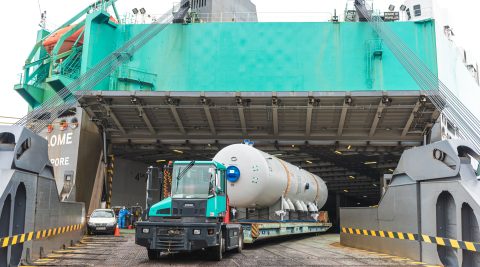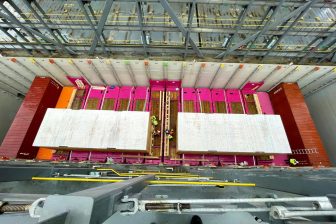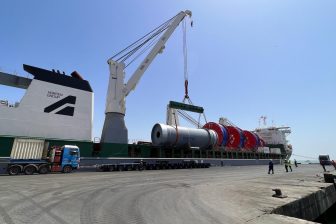
Wallenius Wilhelmsen sees room for cautious optimism for breakbulk in 2023
With an economic slowdown expected Wallenius Wilhelmsen sees cause for cautious optimism, with roll-on, roll-off vessels being the safest, fastest and most cost-efficient way to transport oversized, heavy to lift or out-of-gauge cargo.
Manufacturers can start the new year with confidence that underlying trends are in their favour – despite the economic headwinds of a slowing global economy.
“The widespread parts shortages, port congestion and general supply and demand imbalances that have affected supply chains this year are expected to abate somewhat next year and are already improving as 2022 ends,” says Robert Berg, Market Analysis and Finance Manager at Wallenius Wilhelmsen. He stresses that they won’t disappear completely because there are limited new vessel supply expected in this segment.
The economic outlook varies from nation to nation, Wallenius Wilhelmsen says in its review. Rising energy prices, inflation and declining consumer confidence are weighing on the global economy, which is forecast to grow only modestly at about 2.2 percent in 2023. This is according to the Organization of Economic Cooperation and Development.
Decarbonising shipping
The need to decarbonise shipping also complicates the picture, with the International Maritime Organization’s carbon intensity regulation set to come into effect on January 1, 2023. It will impact capacity.
Berg says: “Our job is to follow IMO regulations while taking advantage of two key trends expected to continue in the breakbulk market in 2023: 1. The drive for energy security and decarbonisation which drive investment in renewables and electric vehicles, and 2. Supply shortages in the construction equipment market leading to higher prices.”
Supply shortages of machines
In the construction machinery market, there is a shortage of machines. This means that the outlook for 2023 is for relatively high continued sales as manufacturers work through their backlogs. Because order books are full and lead times are long, many suppliers are sold out well into the new year, Wallenius Wilhelmsen says, citing Off Highway Research. And because supply is tight, manufacturers have also been able to increase prices against a backdrop of high inflation. “2022 is shaping up to be a peak year for construction machinery, but volumes will remain strong in a historic context next year,” says Berg.
Overall, while the economic outlook for 2023 is uncertain, the breakbulk industry can take advantage of underlying trends in the energy and construction sectors to ensure a successful year.
“As we approach 2023, we look forward to continuing to work closely with our customers,” says Magnus Ödling, VP Global Industrial Account Development, “helping play our part in the move to a greener global economy.”
You just read one of our premium articles free of charge
Register now to keep reading premium articles.



